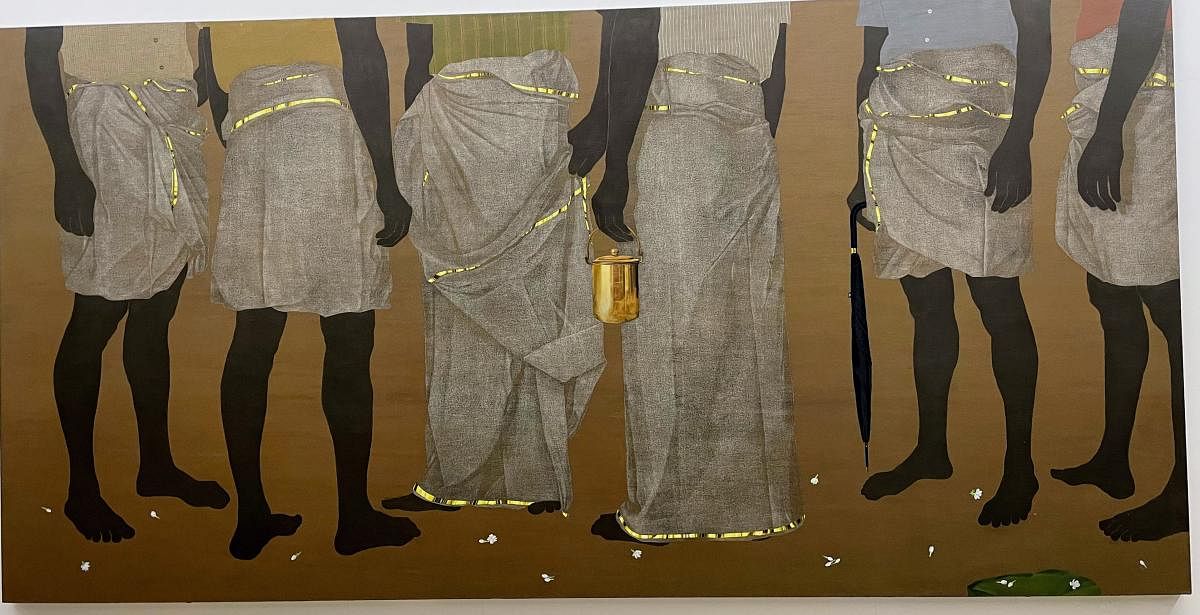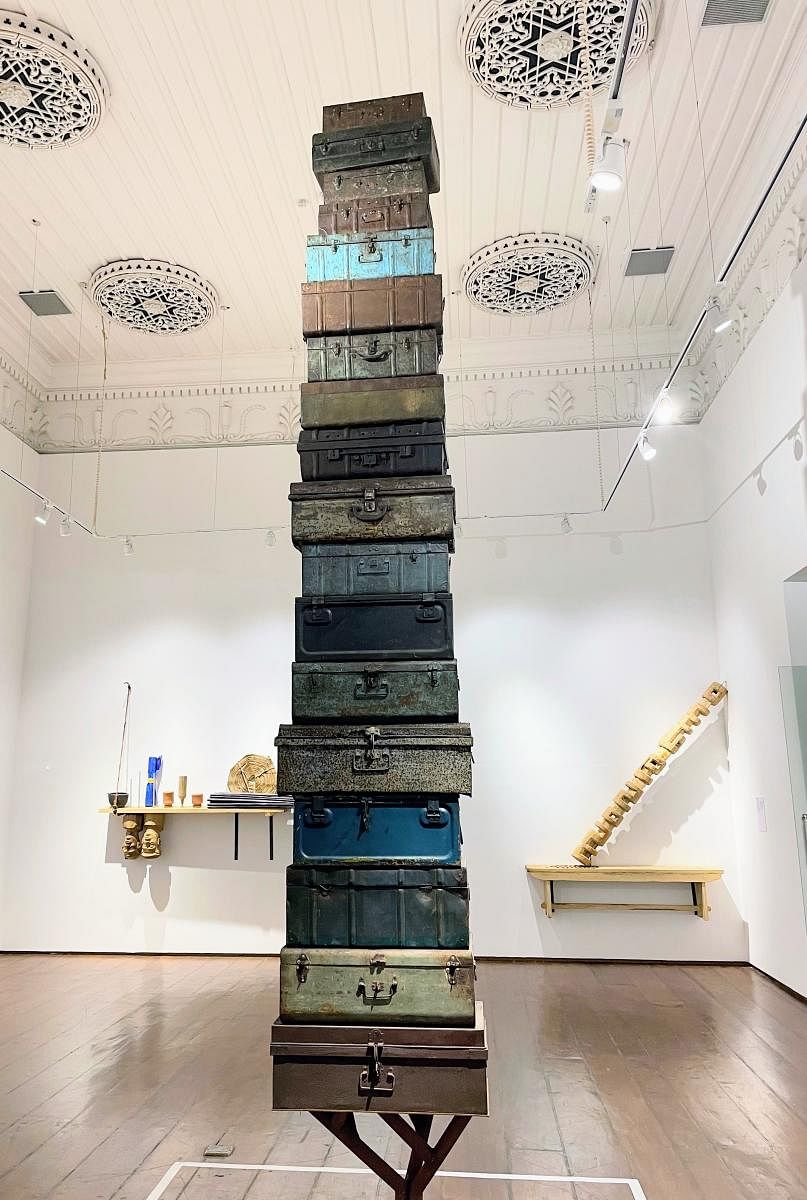

The fifth edition of the Kochi-Muziris Biennale, arguably India’s best art show, is on again at a handful of venues in Kochi, mostly in the Fort Kochi area. The 2022-23 edition, curated by Shubigi Rao, puts on display a large swathe of storytelling through film, installations, photography and art, from a wide arch of countries: Croatia, Australia, Spain, Japan, Bangladesh, Switzerland, Pakistan, Chile, Vietnam, Sweden, Hong Kong, Reunion Island, US, Turkey, UK, Latvia, Mexico, Germany, Singapore, Guatemala, Zimbabwe, Turkey, Nepal, Myanmar, Malaysia, Thailand, and more. Since the show, which had its actual curtains up on 23 December 2022, goes on till 10 April 2023, there are no teeming crowds to battle, thankfully.
This edition is hugely, wonderfully, political in nature, centring on displacement, all the artists shining a spotlight on the rape of the environment, the abrogation of citizens’ rights, the indignities and iniquities suffered by those who live geographically and emotionally in minority ghettos.
Also, much of this edition is art through film, which meant visitors needed to be invested enough to sit through informative videos, rather than do a quick trawl of work hung or installed at select sites.
The displays were enigmatic (Sandip Kuriakose’s inkjet prints in a collection titled Woh Bhi Line Ka Tha), apocalyptic (Pranay Dutta’s dystopic film), uplifting like Nepal’s Feminist Memory Project exhibition titled The Public Life of Women, evocative like Saju Kunhan’s Location History series. There were melancholy musings on migration at Durbar Hall in Kochi town, the standout being a tower of old tin boxes, an installation by Abdulla P A. There was a beautiful film on the libraries of Karachi using that space as an emotional refuge, titled These Silences are the Words.
There was an evocative film and photo installation titled Raid into Tibet, about the CIA’s brief misadventure in Tibet in the late 50s. And then, there was my favourite: Brothers, Fathers and Uncles by Devi Seetharam, a brilliant take on the non-inclusive occupation of public spaces by men in Kerala, visualised through the mundus worn by them.
What I did notice though, was that some of the videos did not have Malayalam translations or a Malayalam soundtrack. I have seen many a local bringing their wide-eyed children to Aspinwall and painstakingly explaining the artwork they were viewing; I did not see any this time.
Strangely enough, given that the Kerala government is usually very sharp when it comes to the revenue-earning tourism sector, the approach roads to the main venue Aspinwall House were a mess.
There were pleasant, helpful volunteers at all the Biennale venues. There was innocence and trust which is remarkable at a time when everything and everyone is being viewed with suspicion. At some places, even as I dug into my bag for the entry ticket, the guard would wave me through with a smile. There were no bag checks, and photography was allowed. There were books and printed pamphlets alongside some artwork, with a notice that said you were free to read them but not to take them home. Visitors were left unmolested, trusted to view the art and leave quietly. But sometimes the heat did get to the Biennale visitors. I stood for a long time admiring an artwork beside a man as still as a rock, only to look sideways and see that he was fast asleep on his feet! As always, talks, seminars, cinema screenings, workshops, and music programmes were the cherries on the icing of the Biennale.